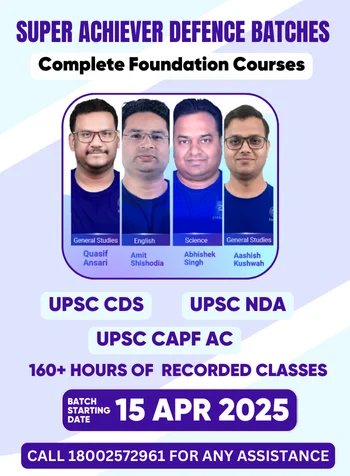- Written By
Saif_Ansari
- Last Modified 16-05-2023
What is Screening in SSB Interview? Key to Pass OIR and PPDT
The Services Selection Board (SSB) Interview is the final stage in the selection process for the Defence Forces. The interview spans five days, with different tasks assigned to candidates daily. Since cracking the SSB interview is competitive—especially the screening process—which is confusing, too, interested candidates need to understand everything there is about it. Therefore, to help such aspirants, we have covered some assistance in this article.
SSB interview is conducted right after the written test; technically, it is the second stage of the selection process. However, the interview is further segregated into other rounds. The screening process for the SSB interview is a qualifying stage, and only candidates who clear the stage can proceed to the next stages of the selection process.
Screening in SSB Interview
The screening test constitutes a demanding evaluation, primarily due to the intense competition level. The selection in the screening test relies upon the candidate’s performance—in both the verbal and non-verbal intelligence tests and the Picture Perception and Discussion Test (PPDT). These tests evaluate the candidate’s cognitive abilities, reasoning skills, and perception.
What is Officers Intelligence Rating Test?
The Officers Intelligence Rating (OIR) test, also known as Intelligent Test, is the first round conducted as part of the screening test for the SSB interview. OIR test is an aptitude assessment designed to evaluate a candidate’s verbal and non-verbal reasoning abilities.
With sufficient preparation beforehand, one can easily navigate through the test. There is a plethora of online material available for practising various types of OIR questions and high-quality test series to gauge one’s performance.
What is Picture Perception and Discussion Test (PPDT)?
Let us now delve into the critical component of the selection process, namely the Picture Perception and Discussion Test (PPDT). As the name suggests, this test primarily assesses a candidate’s perception and requires them to create a story around a picture displayed on the screen for a mere 30 seconds. Subsequently, candidates are given four minutes to jot down their story, followed by an individual narration and group discussion.
While all three elements carry significant weight, individual narration is considered the most crucial, followed by group discussion and other aspects. It is vital to accord equal emphasis to all aspects of the activity, given that one’s overall performance is evaluated during the assessment.
As we have already discussed, PPDT is an essential component of the SSB interview process, and it’s vital to perform well. Here are some tips to pass the PPDT on the first attempt:
1. Perception is Key
The first thing you should do when you are asked to see the picture on the screen is concentrate on the instructions the assessors give. Then, focus on the image and observe it with full concentration. This will help you to make a meaningful story around the perceived picture.
2. Take your time
It’s crucial to take your time to analyse the picture properly before writing your story. The theme and main idea of the story depend on your power of imagination. So, analyse the picture with full concentration and try to make a meaningful story.
3. Picture your story
The story should revolve around three things: what led to the situation, what is the situation, and what the outcome will be. So, have a rough idea of the story in your mind about these three factors around which you will write your final story. This will help you to write a crisp and meaningful story.
4. Practice narration
After writing the story, try to narrate it to yourself in your mind 2–3 times so that you have confidence before the final narration. Listen to other candidates attentively during the individual narration and consider adding their valuable points to the discussion.
5. Participate in GD
During the group discussion, try to initiate, but if you can’t, don’t panic. Listen to everyone, take the most common points, and try to add all those points to the group discussion. Try to talk more about points that help the group reach some consensus. Wait for the right time to pitch in with “HEAD SHOT” points/ideas, and avoid repeating the same points repeatedly.
6. Focus on the Process
The most crucial thing during the performance is not to think about the results. Keep yourself calm, hold your nerve, and enjoy the process. Remember that the assessors are looking for your overall performance, and they’re not judging you based on a single activity.
Congratulations! You have successfully navigated the intricacies of the SSB screening process by reading this article. Please do not hesitate to contact us if any further queries have surfaced or additional guidance is required. We are always eager to lend a hand to aspiring candidates like you.
Keep Embibing!
Some other articles you might find interesting:








































